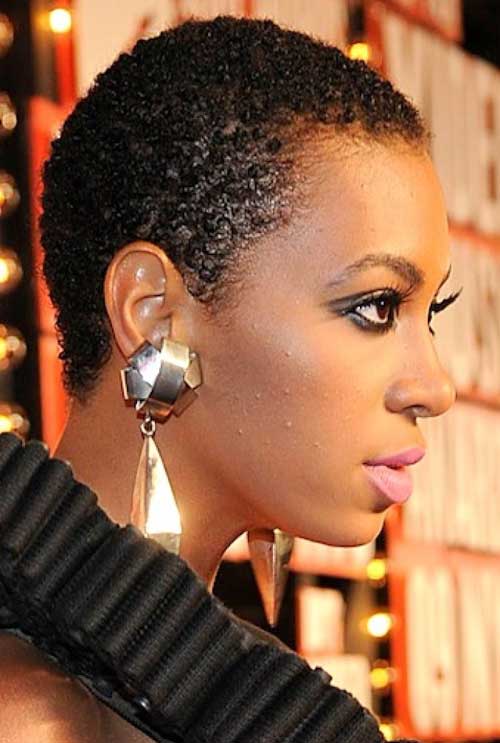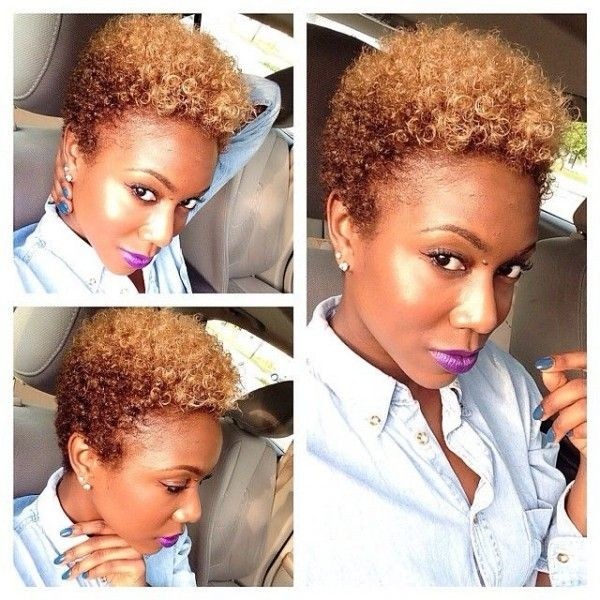Wednesday, 30 September 2015
Monday, 28 September 2015
Fashion and Style Lookbook: Healthy Monday:Best Time To Take Your Break At Wor...
Fashion and Style Lookbook: Healthy Monday:Best Time To Take Your Break At Wor...: We've all been there, we've got so much to do that our stomachs are rumbling and our eyes are practically seeing double before we ta...
Fashion and Style Lookbook: Healthy Monday:Best Time To Take Your Break At Wor...
Fashion and Style Lookbook: Healthy Monday:Best Time To Take Your Break At Wor...: We've all been there, we've got so much to do that our stomachs are rumbling and our eyes are practically seeing double before we ta...
Healthy Monday:Best Time To Take Your Break At Work

We've all been there, we've got so much to do that our stomachs are rumbling and our eyes are practically seeing double before we take five for lunch - new research has found that unsurprisingly this isn't the best time to take a break.
Most of us will sooner treat ourselves to a trip to the toilet once we've finished a task than take 'screen-breaks' seriously.
Well, a new study in Journal of Applied Psychology has found that, looking at 22-67-year-olds who work a five day week, the best time for people to take a break is actually mid-morning.
The researchers at Baylor University found that not only should people step away from their desks at this time to improve motivation, concentration and energy, they should also take 'better breaks'.
The doctors defined breaks as 'any period of time, formal or informal, during the workday in which work-relevant tasks are not required or expected, including but not limited to a break for lunch, coffee, personal email, or socialising with co-workers, not including bathroom breaks.'
They found that those who used these times to do things they actually enjoy had better job satisfaction and less back pain, headaches and eye strain.
So, we've told you time and again, get up from your desk and do something you love - go to the gym, go for a run, or just read a book in the park, and - if you can - do it more than once.
'Unlike your cellphone, which popular wisdom tells us should be depleted to zero percent before you charge it fully to 100 percent, people instead need to charge more frequently throughout the day,' the lead scientist explained.
Credit:Women's health
Wednesday, 23 September 2015
Fashion and Style Lookbook: 12 Unexpected Beauty Uses for Olive Oil
Fashion and Style Lookbook: 12 Unexpected Beauty Uses for Olive Oil: Over the last decade, everyone has been harping on the beauty benefits of olive oil, but the truth is this kitchen staple has been used on t...
12 Unexpected Beauty Uses for Olive Oil

Over the last decade, everyone has been harping on the beauty benefits of olive oil, but the truth is this kitchen staple has been used on the body since ancient times (thank you, Cleopatra). Naturally, olive oil is packed with anti-aging antioxidants and hydrating squalene, making it superb for hair, skin, and nails. Just like coconut oil, it's an essential in any DIY beauty maven's kit.
1. Preshampoo Hair Treatment
Olive oil has been used as a hair treatment since ancient Egyptian times. First, warm the olive oil in the microwave or in hot water. Then apply it generously to the ends of hair and scalp. Leave it in for up to 10 to 20 minutes, and then shampoo it out.
2. Lip Scrub
Combine coarse sugar with a teaspoon of olive oil for a chapped-lip fix. You can also add a splash of lemon juice for added flavor and acidic exfoliating properties. This scrub is good enough to eat (literally). Plus, you can expand the recipe for your whole body.
3. Eye-Makeup Remover
We know what you're thinking—slathering olive oil all over your face would actually cause bigger problems and clog pores. But in actuality, the oil grabs onto other oil-based products (think: Like attracts like), making it a great precleansing step to remove stubborn eye makeup. Follow it up with warm water and a pH-balanced face wash.
4. Ear-Wax Remedy
If you often have ear-wax buildup, turn to olive oil to flush out the clog. For three or four nights, put a few drops in the ears before bed to help loosen excess wax.
5. Shine Serum
There's no need to buy a separate hair product to impart shine on second-day strands. Just rub a few drops of olive oil on flyaway ends after styling for an extra-glossy finish.
6. Shaving Cream
Run out of shaving cream? Head to the kitchen and slather legs with olive oil before applying the blade. You'll ward off razor burn and bumps with the help of this natural lubricant.
7. Antibacterial Balm
If you're taking an all-natural approach to medicine, you can whip up this DIY recipe for a Neosporin knockoff. It includes antibacterial olive oil along with lavender, calendula, and tea tree oil to ward off germs and scarring.
8. Cuticle Conditioner
Want to grow longer, stronger nails? Use olive oil as your cuticle softener. Chef Giada De Laurentiis applies the oil to her hands as she cooks, and you can easily keep a little by the sink for post-sanitizing moisture.
9. Eczema Remedy
The best and most widespread use for olive oil is as an intense moisturizer. This product works great as an allover treatment for extra-dry skin. Since it's natural, it's the ideal pick for eczema and more.
10. Diaper-Rash Treatment
There are very few products that are safe for both babies and adults. Olive oil is perfect for the sensitive skin on a baby's bottom and as a moisturizing remedy for cradle cap too.
11. Cracked-Heel Repair
Split, rough heels need moisture to heal. After exfoliating with a pumice stone, apply olive oil to feet. Put on socks to lock in the hydrating treatment as you sleep.
12. Makeup-Brush Cleaner
Cleaning your makeup brushes should be a monthly ritual. You can use a DIY cleanser that's two parts antibacterial soap and one part olive oil.
Credit :Allure
Friday, 18 September 2015
Thursday, 17 September 2015
Fashion and Style Lookbook: Vampy Glam look Makeup tutorial
Fashion and Style Lookbook: Vampy Glam look Makeup tutorial: Enjoy this beautiful tutorial Credit Omabelle.
Tuesday, 15 September 2015
Fashion and Style Lookbook: Sodium Allowance for Women
Fashion and Style Lookbook: Sodium Allowance for Women: Sodium and Your Health Sodium, commonly known as salt, is an alkaline element that occurs naturally in most foods and plays an essential ro...
Sodium Allowance for Women

Sodium and Your Health Sodium, commonly known as salt, is an alkaline element that occurs naturally in most foods and plays an essential role in maintaining the optimal health and functioning of your body. Adult women should consume no more than 2,300 milligrams of sodium per day.
Most women, however, consume more than the daily recommendation, with negative consequences to their health
Sodium and Health
Sodium is a necessary part of your daily diet, and your body needs at least 1,500 milligrams per day to function normally, according to the Institutes of Medicine. Sodium helps your body maintain a proper balance of liquids and regulates both blood pressure and blood volume. The mineral aids your nervous system in transmitting nerve impulses and affects the contraction and relaxation of muscles.
Your kidneys process and store an optimal balance of sodium. They retain sodium when your dietary levels are too low, and they excrete sodium through urine when levels are too high.
Sources of Sodium
Dietary sodium typically comes from three main sources. Processed foods, such as prepared dinners, soups, cold cuts and fast food contain large amounts of added salt. Sodium also occurs naturally in vegetables, dairy products, meat and shellfish. While these foods contain lower levels of sodium than processed foods, eating too much natural sodium can still be harmful to your health. The third primary source of sodium is the salt in your kitchen cabinet or on your dining table.
Finding a Healthy Balance
Reduce your sodium intake by eating more fresh fruits and vegetables. Eat potassium-rich foods to counteract the negative effects of sodium on your body, recommends the American Heart Association. Foods high in potassium include spinach, bananas, dairy products and sweet potatoes. Season your food with salt-free herbs, spices and lemon instead of reaching for the salt shaker.
Wednesday, 9 September 2015
How To Wear Colourful Lipstick
1. MAKE IT WORK WITH YOUR SKIN TONE
The most important of all of the tips on how to wear colorful lipstick is to really take your time choosing a color that works best for your skin tone. Ladies with warm skin tones will probably look better wearing a lipstick that walks that fine line between a red and a purple, while ladies with cool skin tones can take their pick amongst tons of cooler purple
2. KEEP EYE MAKE UP NATURAL
This simple, well-known tip for wearing dark lipsticks doesn’t need a lot of explaining, I’m sure. Opt for sexy, nicely lined cat eyes that Angelina Jolie and Dita Von Teese are so fond of, or give a natural looking smoky eye a try
3) CHOOSE THE RIGHT HAIR STYLE
When your clothes are dark and your hair is dark and worn down, a colorful lip doesn’t say glam chic. Consider both your outfit and your hair when deciding to go with a colorful lip and don’t be afraid to make some small last-minute changes in case you notice they could upgrade your look significantly.
Is wearing colorful lipstick a big no-go for you and, if so, do you think these tips could inspire you to maybe give it a shot sometime in the future?
Credit:Banke Meshida
Monday, 7 September 2015
Fashion and Style Lookbook: Healthy Monday:7 Tips For Beating The Bloat Before...
Fashion and Style Lookbook: Healthy Monday:7 Tips For Beating The Bloat Before...: Feeling heavy and bloated is one of the most unpleasant symptoms of PMS. This monthly annoyance is caused by water retention or gas — a...
Healthy Monday:7 Tips For Beating The Bloat Before Your Period

Feeling heavy and bloated is one of the most unpleasant symptoms of PMS. This monthly annoyance is caused by water retention or gas — a buildup of air in the intestines and stomach — which can leave us running towards the closest pair of sweatpants. Luckily there are ways to reduce puffiness and feel more comfortable in your skin. Here are my top 7 food cures to help you beat the bloat.
Avoid Carbonated Beverages

Drinks like soda and seltzer contain carbon dioxide, which causes the fizzing we see in our glass. These bubbles enter our digestive track, and can sometimes make our stomach feel distended and uncomfortable, not to mention gassy. If you suffer from bloating as a symptom of PMS, it's best to stick to flat water, which hydrates sans bubbles.
Limit Gas-Producing Foods

Certain foods are harder for your body to break down and digest. A by–product of this tough digestion is gas. If gas tends to be a personal issue, minimize foods such as broccoli, Brussels sprouts, cauliflower, beans and cabbage during the most problematic week in your monthly cycle.
Avoid Salty Foods

Salty foods cause water retention and can make your usual PMS bloat worse. To reduce overall distention, you'll want to avoid the saltiest offenders in your diet, including deli and processed meats (like bacon, sausage, and hot dogs), canned soup, pickles, many frozen entrées, and salty condiments like soy sauce, ketchup, and bottled salad dressing. You should also lay off salty snacks like chips and pretzels. Instead opt for low–sodium foods like yogurt, fresh fruit, vegetables, and unsalted nuts and seeds.
Limit Sugar Alcohols
.
Sorbitol and maltitol are sugar alcohols which are frequently found in sugar–free foods and sugarless gum. These sugar alcohols are poorly digested by some people and can exacerbate gas and discomfort in those who are super sensitive. To beat the bloat (especially when you're experiencing PMS), it's best to leave sugar–free candy and gum, diet drinks and other foods that contain sugar alcohol.

Sorbitol and maltitol are sugar alcohols which are frequently found in sugar–free foods and sugarless gum. These sugar alcohols are poorly digested by some people and can exacerbate gas and discomfort in those who are super sensitive. To beat the bloat (especially when you're experiencing PMS), it's best to leave sugar–free candy and gum, diet drinks and other foods that contain sugar alcohol.
Don't Overdo it on Fiber

It's not often that you hear a nutritionist tell you to cut back on your fiber intake. But while fiber is incredibly important, too much can exacerbate bloat in people who are sensitive. When experiencing PMS it's best to monitor your intake of high–fiber foods, especially bran cereals, beans, lentils, and high–fiber bars. When you do eat these foods, drinking plenty of flat water can help wash them all down and promote smoother digestion.
Avoid Large Meals

Consuming high volumes of food at one time will inevitably distend the stomach, making you feel even puffier. Large meals also tend to be heavy in carbohydrates and fat, which will exacerbate any uncomfortable bloating. Instead spread low-volume meals and snacks throughout the day (three meals and 1–2 snacks will do the trick), and aim to eat every 4–5 hours. Low–volume, PMS–friendly meal options include 6 ounces of nonfat yogurt and a cup of fresh berries, a 4–egg white spinach and mushroom omelet with one slice of whole wheat toast, and 2 cups of vegetable salad with grilled shrimp or chicken.
Incorporate Protein in Every Meal

Including protein in each meal and snack will do wonders for reducing puffiness. Protein can act like a natural diuretic and help your body get rid of extra water (which is in no short supply when you're experiencing PMS!). For breakfast, avoid carb–centric meals like bagels, corn muffins, pancakes and waffles — and opt for protein–rich scrambled egg whites with a side of fresh fruit. To incorporate protein into your snacks try an apple with a handful of almonds, a part–skim string cheese, or a container of nonfat yogurt.
Credit :Joy Bauer
Wednesday, 2 September 2015
Glow Time: How To Achieve Radiant Skin Tone
Want gorgeous glowing skin like your fave celeb? Then you've got to put the work in, girlfriend! Peep these surprising tips for skin that really radiates from inside out.
1. Exfoliate
Sure, you've heard that exfoliating your skin is important, but to achieve glowing skin, it is a must. Try exfoliators that contain alpha hydroxy acids, such as glycolic acid. Try this: Givenchy Peel Me Perfectly Tri-Performance Skin Polish , a triple-action scrub that contains glycolic acid to promote natural exfoliation and clay extract to cleanse skin and tighten pores.
Note: At-home peels are another effective path to smoother, more even-toned skin and generally contain up to 30 percent glycolic acid, whereas a dermatologist can use up to 70 percent concentrations for more dramatic results.
2. Detox your body
It is true: The outside of your body reflects what's going on inside of it. Skin conditions develop when the skin can't do its job of eliminating toxins efficiently, which happens because the other eliminative organs are overloaded as well. Talk to a natural health care professional to find a detox program that works for you, or take a load off your system and benefit your skin by doing the following:
Drink warm lemon water each day to help flush toxins from the body.Cut out sugar and alcohol for a few days (at least five) to give your body and skin a break.Up your intake of fresh fruits and vegetables to boost the amount of skin-saving nutrients you're getting.Limit salty snacks, which can cause swelling and water retention.3. Apply topical nutrition
Two great antioxidant boosters are green tea and grape seed extract. "These powerful bioflavonoids play a unique role in protecting vitamin C from oxidation, thereby allowing your skin to reap more benefits from it," explains Amy Chalmers, CDT and USANA Health Sciences spokesperson. "They also play an additional role in helping skin look younger and brighter as they defend against elements such as sun, stress and pollution that can damage collagen and accelerate the visible signs of aging."
4. Try coconut oil
Virgin coconut oil has the ability to restore and rejuvenate damaged skin. It heals, repairs and leaves your skin radiant. Coconut oil has excellent antioxidant properties and helps to destroy free radicals. It also can even out your skin tone, giving it a more healthy-looking texture and a subtle glow.
5. Use radiance-boosting makeup
Try the celebrities' secret to glowing skin to get that "lit from within" look: Apply an illuminating cream under your makeup. Check out Nars Illuminator to easily take your skin from dull to bright and healthy. Bronzers are also excellent for creating a healthy glow. Choose an illuminating shade rather than a matte one and apply it everywhere the sun hits your face, including your forehead, nose and cheeks.
6. Get your daily dose of vitamin C
Vitamins for skin are so important, particularly vitamin C, which is the key to achieving a bright, even complexion, notes Erin Ferrill, East Coast educator forHydroPeptide. "The brightening qualities of this well-known vitamin make it the perfect companion for anyone struggling with age spots, sun damage or those who just want a makeup-free pick me up," Ferrill says. It should also be noted that when vitamin C and vitamin E are taken together internally, they have been shown to increase the ability of the skin to protect itself from sun damage. It has even been hypothesized that this combination might give your skin a natural sun protection (SPF) of 2, she says. "While this is no excuse to ditch the sunscreen, it is a great way to give your skin a fighting chance against the damaging rays of the sun. Look for products that combine vitamin C with gentle exfoliants and natural skin brighteners like bearberry, licorice, mulberry and brightening peptides."
7. Suck on an ice cube
Did you know that sucking on an ice cube chills all of the millions of cells in your cheeks and lips, causing an increase in circulation, and resulting in plumper, more rosy-looking skin? Well, according to Annie Tevelin, founder of SkinOwl, it's true! "This is a great glow-fix mid-dinner or before taking a picture to restore fatigued skin to a more peaches and cream complexion."
8. Try juicing
We're sure you've heard that glowing skin begins with what you eat, but when you're a busy girl on the go (like us) how the heck are you supposed to get in all your fruits and veggies? Easy, try juicing! Jayna DiMartino, California Educator for HydroPeptide, says she fills her diet with nutrient rich superfoods, such as kale, broccoli, spinach, rainbow chard, celery, cucumber, ginger and beets, by juicing. "Traveling as much as I do, it's not always easy finding a Whole Foods or a juice bar so I make sure to take my green meal capsules with all the dark leafy greens and spirulina," she notes.
9. Remember: Vitamins B and D are key
Vitamin B not only increases blood flow to your cells, but it's also integral to skin generation and slowing the signs of aging, notes celebrity makeup artist Julia Papworth. "An increase in vitamin B in the system translates to a decrease in redness and irritation in the skin." Additionally, Jolie Martin, director and laser skincare expert at New York City'sSKINNEY Medspa, suggests taking vitamin D. "If deficient in vitamin D, skin can appear sallow and more prone to congestion and breakouts," she says.
10. Get some beauty sleep
Sleep affects your physical and mental well being. "When you sleep, you're allowing your body to begin the proper healing process," Chalmers says. "Try a melatonin supplement to help regulate your natural sleep cycles and get your body back on track." This will, in turn, lead to glowing skin.
Tip: Jackie Burns Brisman, senior editor atspafinder.com, recommends the following vitamins for skin to enhance your complexion and give you that gorgeous glow:
Omega-3 fatty acids: salmon, spinach and walnutsVitamin C: citrus fruits, chili peppers, bell peppers, dark leafy greens, broccoliVitamin E: almonds, squash and grape seed oilZinc: Greek yogurtVitamin A: yams and sweet potatoesLycopene: a great antioxidant found in tomatoes
Subscribe to:
Comments (Atom)


















